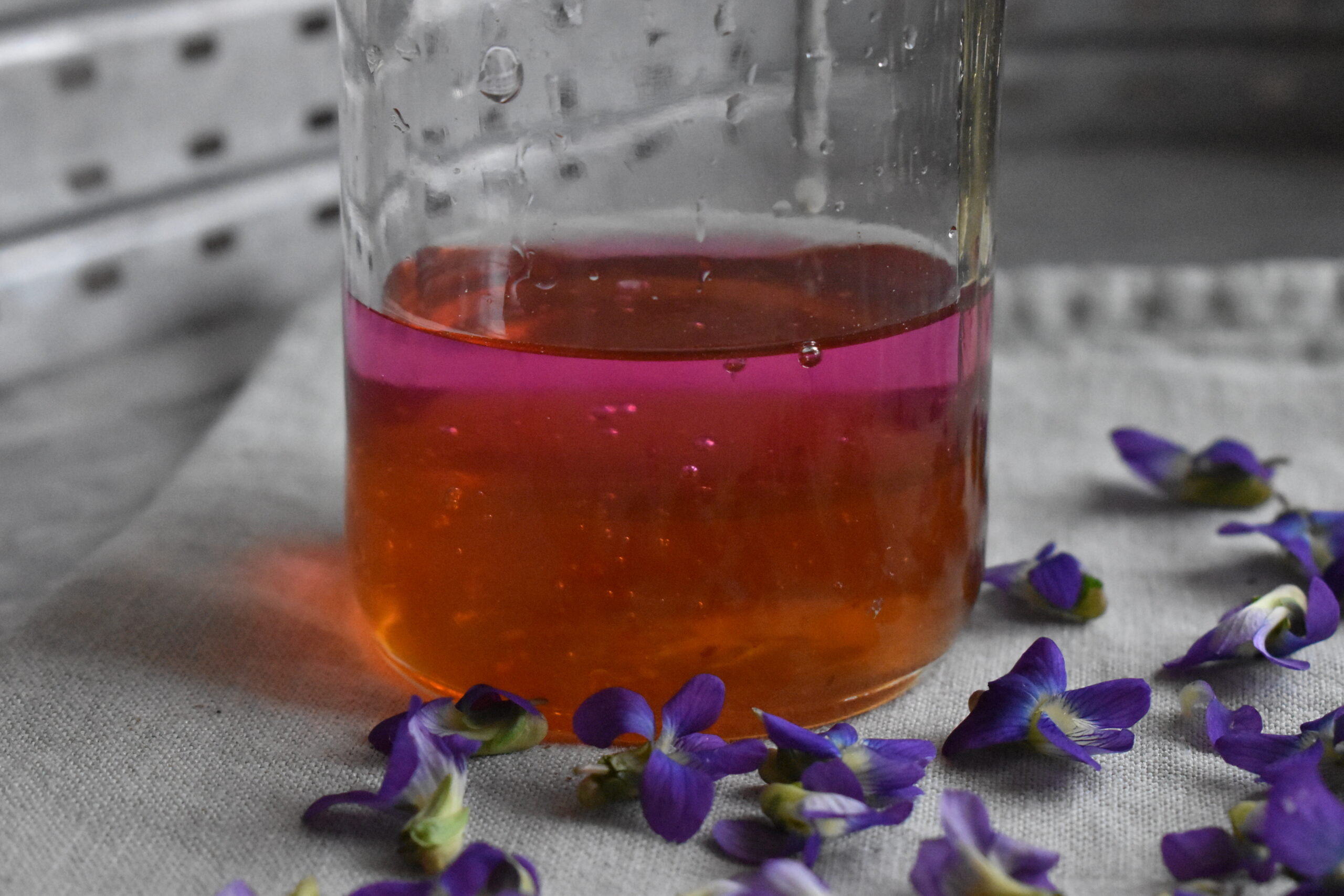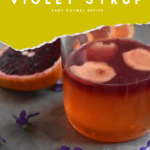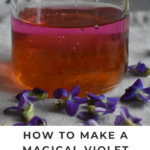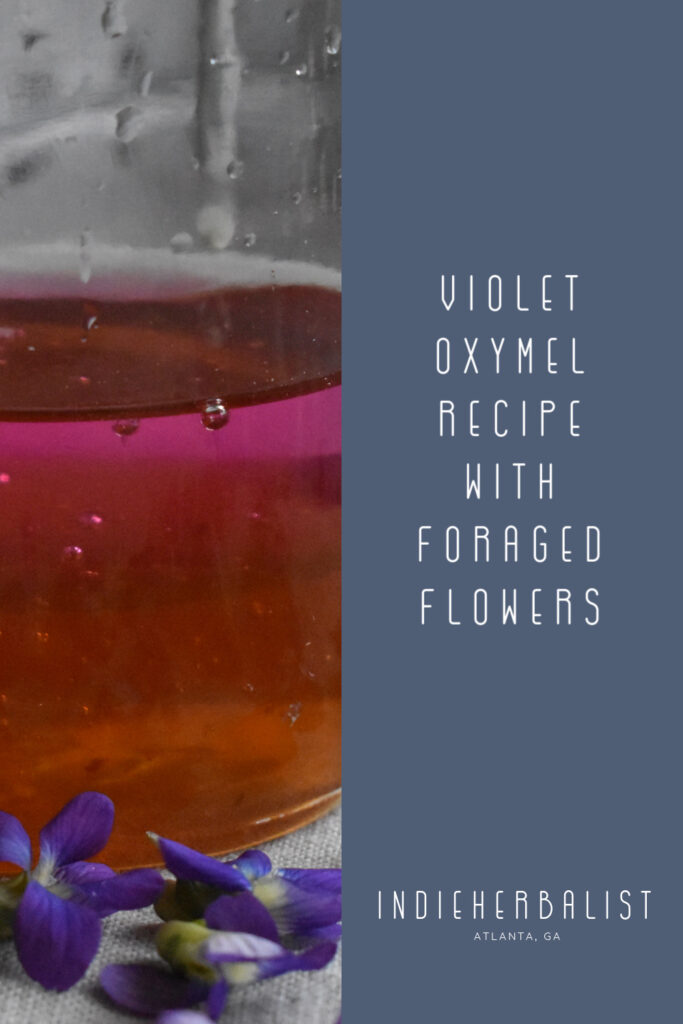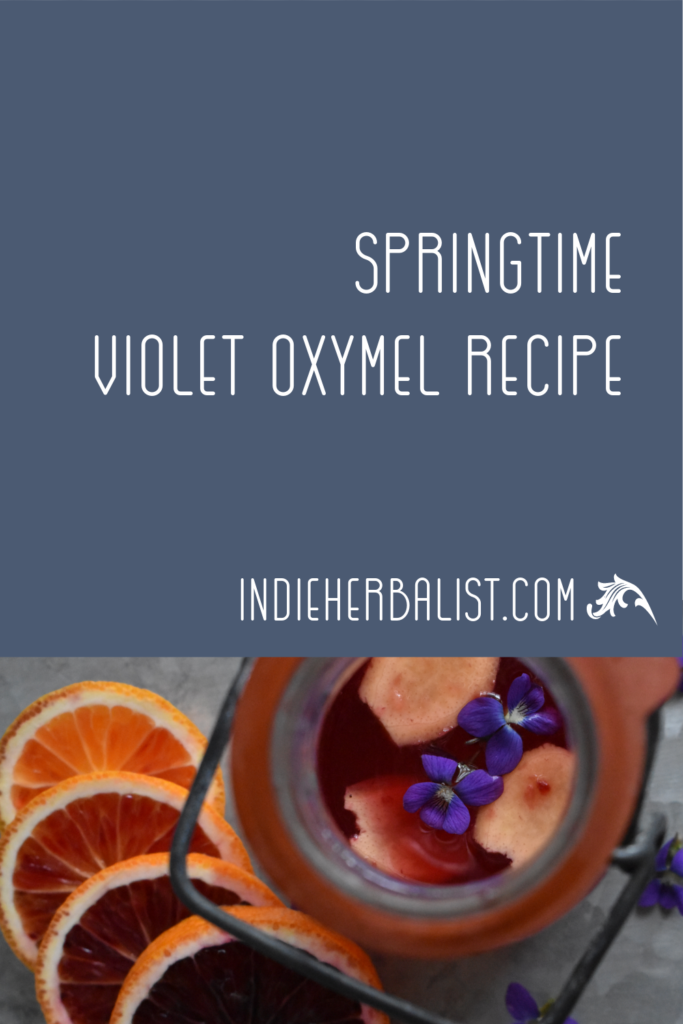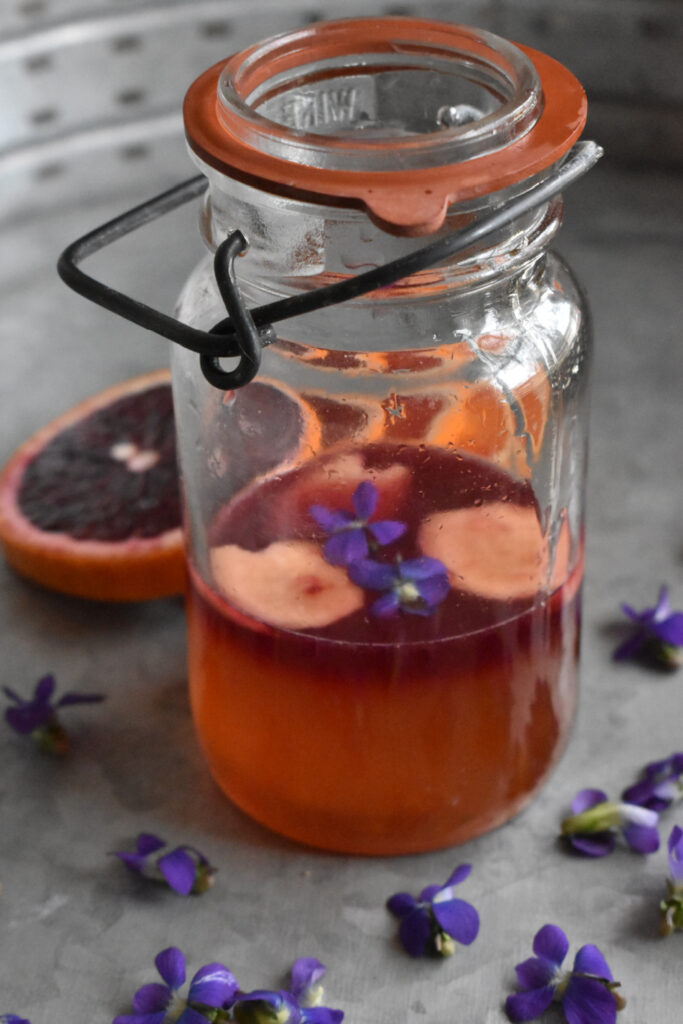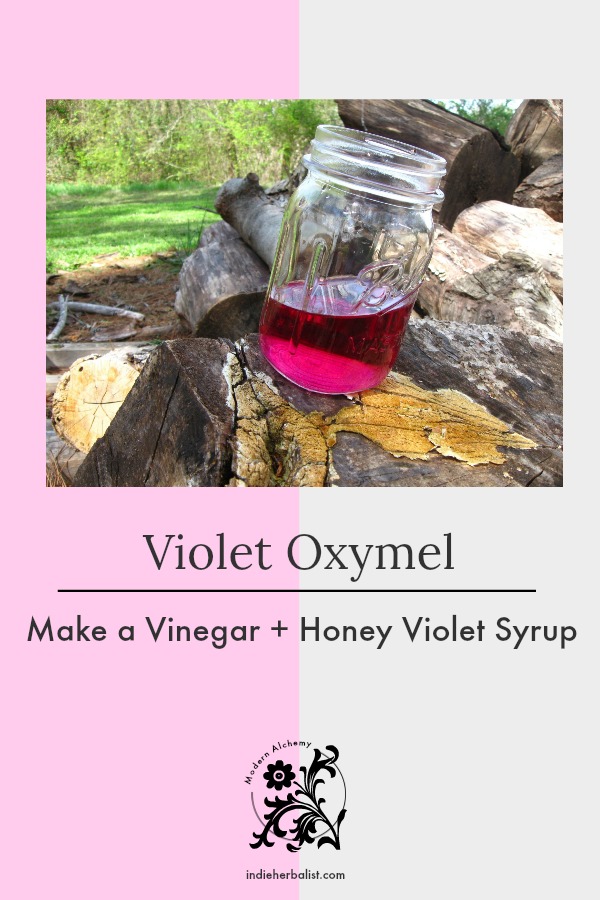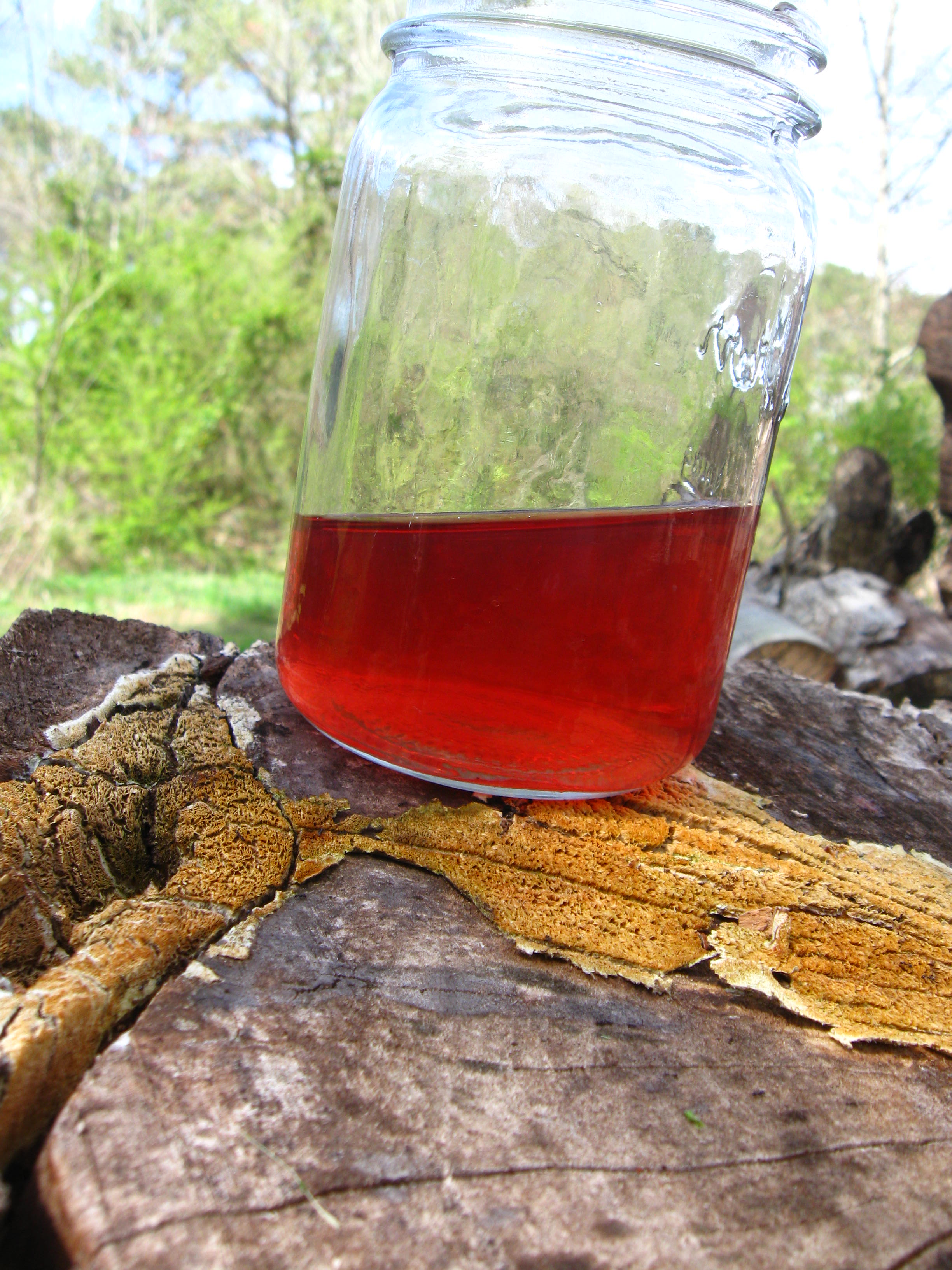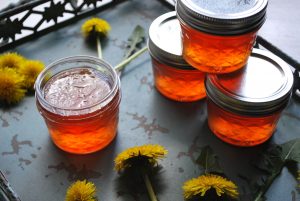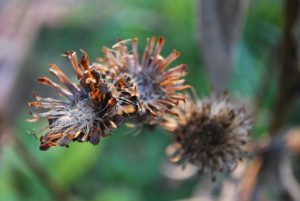Links contained in this post and elsewhere on my website may include affiliate links. When you make a purchase through these links, I earn a commission at no additional cost to you. I only link to products and services that I love - and that I think you will love, too!
Sweet violets are in full swing! So far, I have made sweet violet tea, sweet violet syrup, and have made two types of violet blossom vinegar. The success with the projects has varied somewhat; the sweet violet tea was surprisingly beautiful (an incredible blue), and the vinegars are flavorful and a visually stunning magenta but the syrup accidentally crystallized so I will have to revisit that project later. But I think the real gem of my violet experiments thus far is Violet Oxymel.
Oxymel is a complicated word for a simple concept: vinegar + honey = oxymel. As a general rule, oxymels are soothing for coughs and sore throats, and a lovely digestive tonic before or after a meal. They can either be enjoyed by the spoonful without dilution (deliciously sweet and sour), or stirred into a glass of warm or cold water.
By infusing the vinegar with different herbs, different oxymels can be created. In this case, I used apple cider vinegar, violet blossoms, and local honey. This is how it looks just before mixing. The violet vinegar sits on top of the honey and looks really pretty!
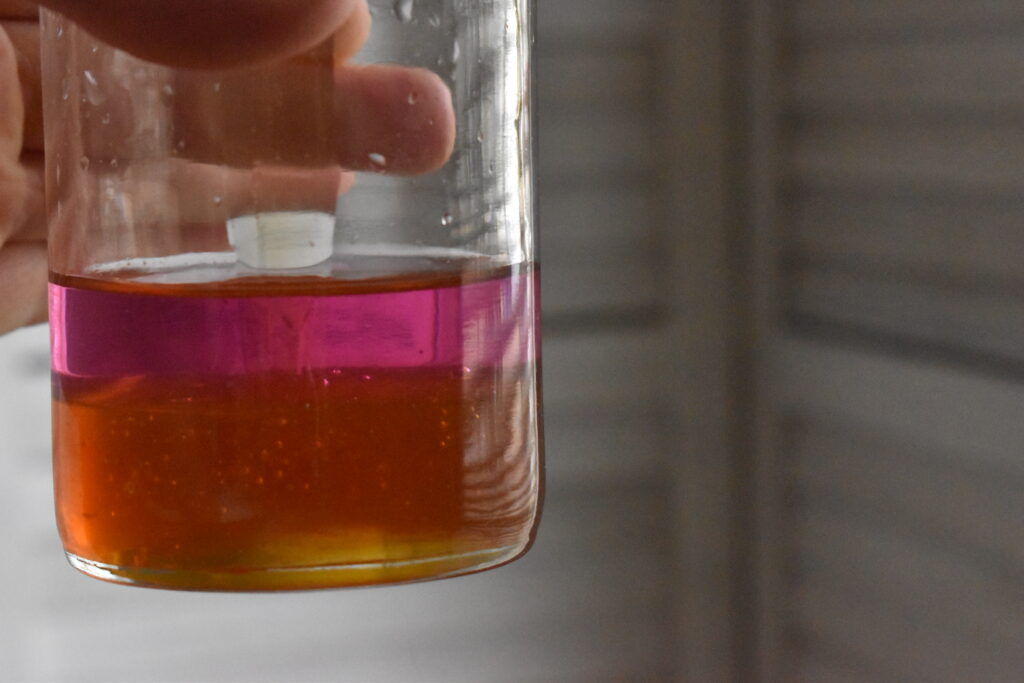
How to make violet oxymel
Ingredients
- 1 cup violet flowers
- 1 cup apple cider vinegar or champagne vinegar
- 1/4 to 1 cup honey (to taste)
- 1 tablespoon blood orange juice (optional)
- 3 1/4″ thick ginger coins (optional)
How to make it
- To make violet oxymel, the first step is making an infused vinegar. To do this, use a 1:1 ratio of violets and vinegar. In this case, I used a cup of each. Allow the blossoms to steep in the vinegar for a week, then strain the vinegar through a sieve to remove the flowers. The apple cider vinegar won’t display as much of a shocking color change as champagne vinegar, but it definitely takes on a reddish hue.
- Stir the honey into the vinegar. It will usually take a minute or two for the ingredients to mix, so don’t worry if the honey seems to clump together at the bottom.The ratio of honey to infused vinegar is up to you, but a quarter cup of honey for every cup of vinegar is a good place to start. More honey can always be added if you would prefer a sweeter taste.
- Once the honey has dissolved completely into the vinegar, the oxymel is ready to use! If you like, add a squeeze of blood orange juice and ginger coins to the jar for a fun twist. Store your oxymel in the refrigerator for the best shelf life.
As a beverage, violet oxymel is especially refreshing over ice, but it makes a nice flavored water at room temperature, too.
Read on for more tips on making violet oxymels!
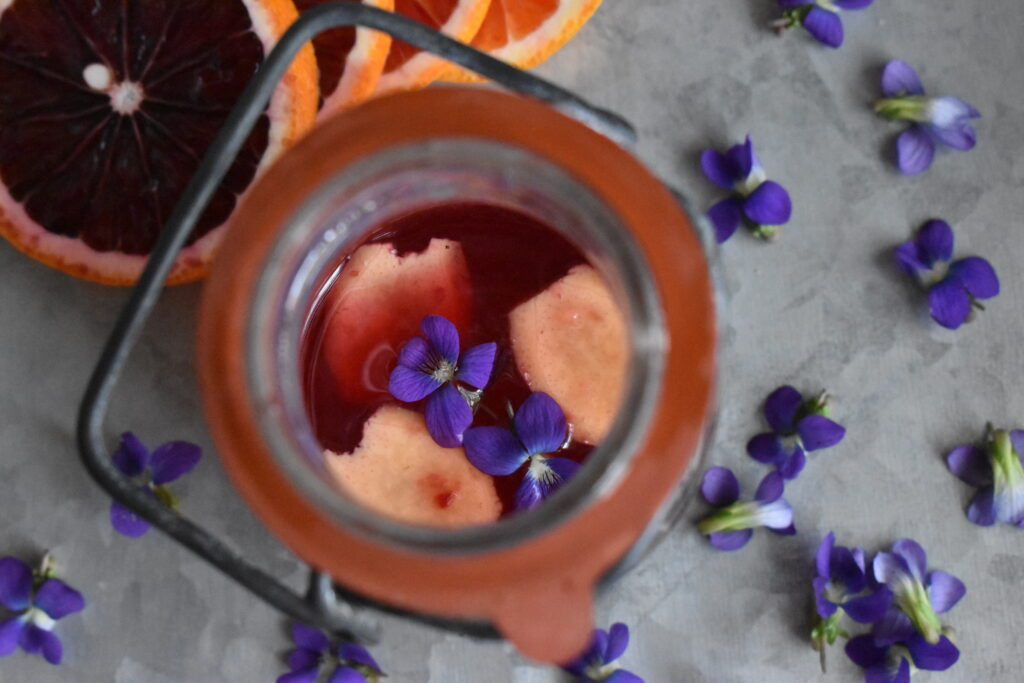
Other tips for making violet oxymel
- Pick violets around noon on a dry, sunny day. The fragrance of the flowers will be at its strongest under these conditions.
- Only harvest violets from an area you know for certain hasn’t been sprayed with herbicides.
- Be sure your violets are correctly identified!
- Don’t feel bad about picking all the blossoms you need. The purple flowers are just for show- they almost never set seeds! Violets grow a second set of tiny, green flowers in the fall that set seed prolifically. Use just the blossoms- you don’t need the stems.
- Place a layer of parchment paper under the lid if you are using a canning jar with a metal ring and lid. Vinegar is used in canning without a problem, but I find that my herbal vinegars sometimes react with the lids. Glass containers with non-reactive lids are definitely better if you have them.
How to Use Viola odorata
Sweet Violet, Viola odorata, is native to Europe but is very common throughout much of the united states. It often grows in lawns and along woodland edges, although it can be hard to spot at first because of its small size. Violet merits consideration for household use, especially because it is found so widely in backyards and vacant lots.
There are several culinary uses for violet. First, the above-ground parts are edible. The young leaves are great as a salad green or lightly steamed much like spinach. Violet flowers can be candied, enjoyed as a fragrant tea, or added to salads. Violet syrup, also made from the flowers, is a unique flavoring for desserts and beverages.
Beyond culinary uses, violet has a historical reputation for being expectorant, ant-inflammatory, diuretic, and alterative. Use the underground portions of violet with caution, if at all. Historically, they have a reputation as a strong purgative and emetic. The leaves and flowers, however, are gentle and mild enough for children. As a children’s herb, violet is useful for encouraging regular bowel movements or soothing fevers.
Even though people can be dismissive of violets and consider them almost as much as a nuisance as dandelions, I’m always thrilled when I find them volunteering in my garden beds or creeping into another area of the lawn. With so many wonderful uses, what’s not to like?
Looking for more herbal vinegar projects? This article has a list of interesting recipes to try.
This post first published on April 7, 2013. Most recently updated on December 30, 2021.
